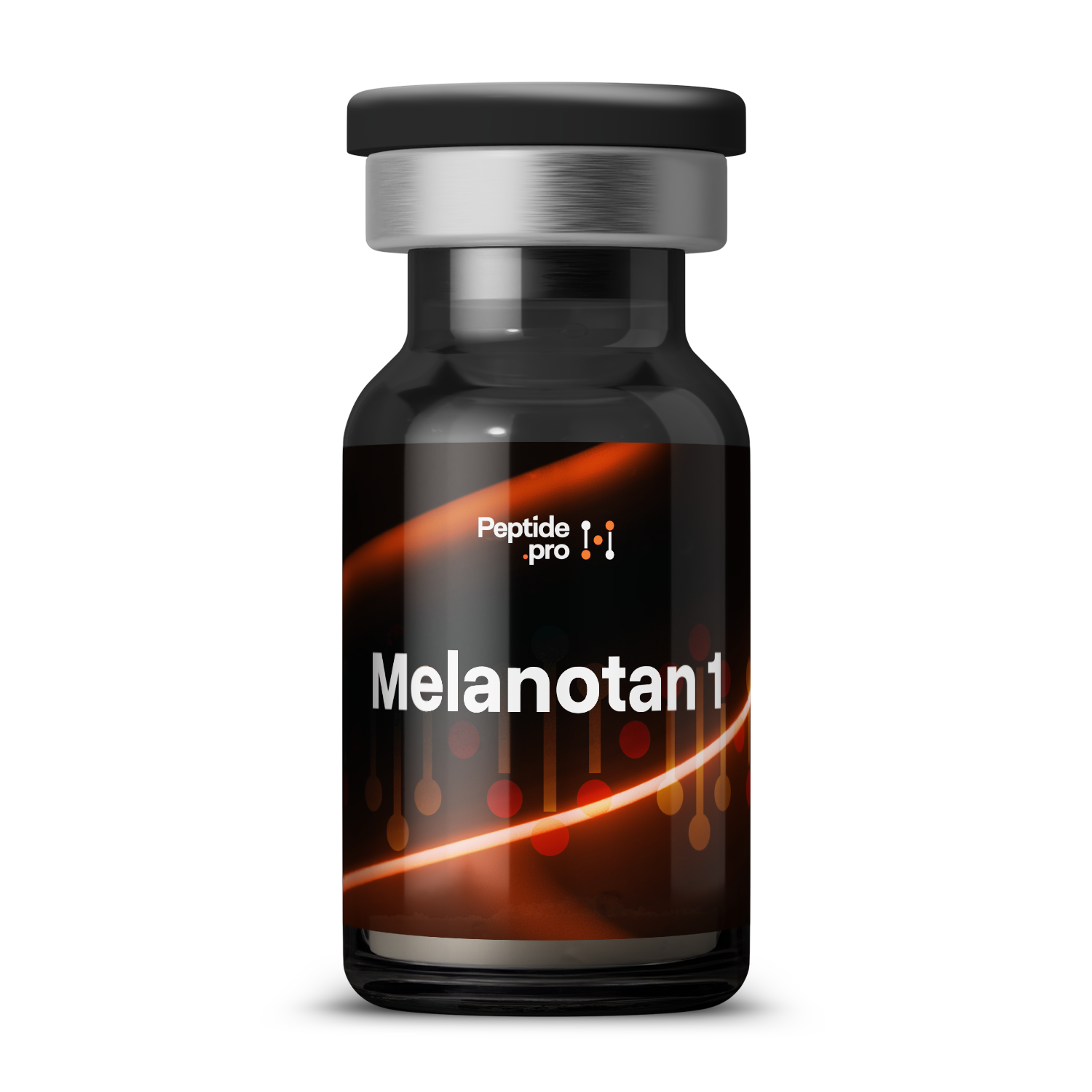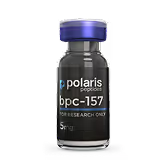Melanotan 1
Melanotan I is a synthetic peptide that mimics the body’s natural tanning hormone by activating receptors on skin pigment cells. When injected, it signals melanocytes to produce more melanin, giving a sunless tan over days. Research shows it can increase pigmentation and help protect against UV damage by darkening the skin without sun exposure.
Compound Overview
About the product
The peptide comprises the core α-MSH sequence of 13 amino acids with one amino-acid substitution to enhance stability and receptor affinity. It retains the C-terminal amide necessary for activity. Produced by solid-phase peptide synthesis, it is purified to research-grade (>95 %) purity. Identity and purity are confirmed by analytical HPLC and mass spectrometry.
Melanotan I binds to the melanocortin 1 receptor (MC1R) on melanocytes (skin pigment cells), stimulating cyclic AMP signaling that drives melanin synthesis. Increased melanin then darkens the skin over days following administration. It does not rely on ultraviolet light to trigger pigmentation pathways. Effects on melanin levels become apparent within one to two weeks of regular dosing.
The peptide is studied primarily for its capacity to induce a sun-less tan. In human trials, Melanotan I increased baseline skin pigmentation and reduced sunburn risk. It has also been investigated for its potential to protect against UV-induced DNA damage. Further research examines its use in pigmentary disorders such as vitiligo.
Reported adverse events include nausea, flushing, and spontaneous erections in males. Injection-site redness or itching is common and generally mild. Transient increases in blood pressure have been observed. Long-term safety data and effects on mole and skin-lesion changes remain unestablished.
Melanotan I is synthesized by Fmoc solid-phase peptide methods, coupling each amino acid on a resin. After cleavage and deprotection, crude peptide undergoes preparative HPLC purification. Final product is lyophilized and stored under inert conditions. Manufacturing follows research-grade peptide compounding standards.
Melanotan I is not approved by the FDA, EMA, or other major regulators for therapeutic or cosmetic use. It is classified as a research chemical and may be obtained only for laboratory investigation. Sale for human consumption is prohibited in many jurisdictions. No over-the-counter or prescription preparations are legally marketed.
Melanotan 1 dosage in human studies has ranged from 0.025 mg/kg to 0.5 mg/kg, administered two to three times weekly. Lower “maintenance” doses follow an initial loading phase. No standardized dosing guidelines exist outside research protocols. All administration should occur under approved investigational study designs.
- Do restrict use to IRB-approved research settings with medical oversight.
- Do monitor skin for new or changing moles or lesions.
- Don’t use as a substitute for sunscreen or UV protection.
- Don’t combine with other tanning agents off-protocol.
- Q: How long until tanning appears?
- A: Noticeable skin darkening typically occurs after one to two weeks of regular dosing.
- Q: Does it prevent sunburn?
- A: Increased melanin provides some UV protection, but sunburn risk is not eliminated.
- Q: Can women experience side effects?
- A: Yes; nausea and flushing occur in both sexes, though spontaneous erections are male-specific.
For research use only. Not approved for medical use.


